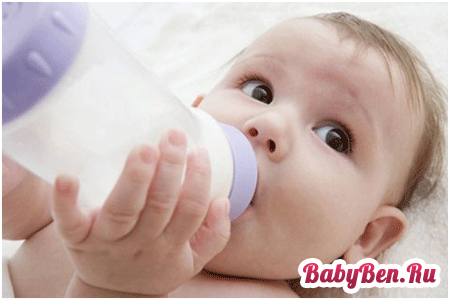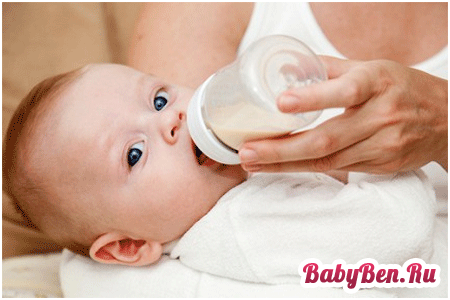
Food of children - the basis of their health, the key to normal development, the stability of their immunity. For kids under the age of one year the perfect food is maternal milk. This product is unique in its composition, as it contains carbohydrates, fats, proteins, vitamins and minerals in the required volume. Breast milk - protecting the child from various types of allergies and infections. Children who have grown on breast milk are less and protected from allergic reactions. But, unfortunately, it often has to translate the baby for mixed feeding.

The content of the article
Signs of lack of maternal milk
It happens that the female milk becomes little for the full feeding of the kid. Signs of such a situation are manifested in the following:
- after feeding there is no feeling of full emptying of the chest, no empty milk;
- the child worries when he is taken away from the chest;
- the baby does not add in weight, he decreases the amount of urination and intestinal emptying.
Mom should take a number of measures to improve lactation:
- apply the baby to the chest every 1.5-2 hours;
- fully and balanced to eat;
- establish a normal psychological situation in the family;
- take food products, and by appointment of a doctor - drugs that increase lactation.
If the events did not give proper result, it is necessary to translate the child to additional, mixed feeding. In this case, the proportion of breast milk in nutrition is 30-80%, and the disadvantage is replaced by pectoral mixtures.
But how to determine the number of detectors? You can navigate for such a calculation:
- the kid under 10 days should receive a day of milk in the amount of 2% of his birth weight, multiplied by the age of the child (in the days);
- from 10 days to 2 months, daily milk consumption is one fifth of body weight. Mixtures for baby food are compensated for lack of maternal milk.

Classification and composition of dairy mixes
Mixtures for the doctocto can be divided into the following types:
- adapted. They are most closely close to female milk in composition and are intended for feeding children up to 6 months. In them the protein content is lower than in the cow's milk, and the composition of fats is optimized;
- nonadapted. These include: cow milk, kefir and their breeding products. These mixtures are fed by children after 1 year.
The composition of milk mixtures for mixed feeding includes lactose, which helps the absorption of calcium and creates a favorable medium for the growth of beneficial bifidobacteria.

The main points of the choice of milk mixtures
For each child, the product for mixed feeding is selected taking into account its individual characteristics. So, a healthy child can be requested with such mixtures as "Nutrilon", "Hipp", "Nan", "Heinz". If the child suffers from the stool delays, intestinal colic, then the optimal mixtures will be "nan milk 1" - for children up to 6 months, and after half a year - "Nan milk 2".
Children with the risk of developing allergies on cow's milk mixed feeding is made by mixtures, which contain partially hydrolyzed protein (in the title there is a mark "Hypoallergenic"). If the child suffers from the intolerance of cow's milk, the doctors produce therapeutic mixtures. They do not have allergens that cause intolerance, for example, "Nutrilon Pepta TSC", "Damil Pepti" and others.
With pronounced lactose insufficiency, mixed feeding is carried out lowolate, as well as dairy lactose mixtures. All milk mixtures for mixed feeding should be administered under the control of a pediatrician.

